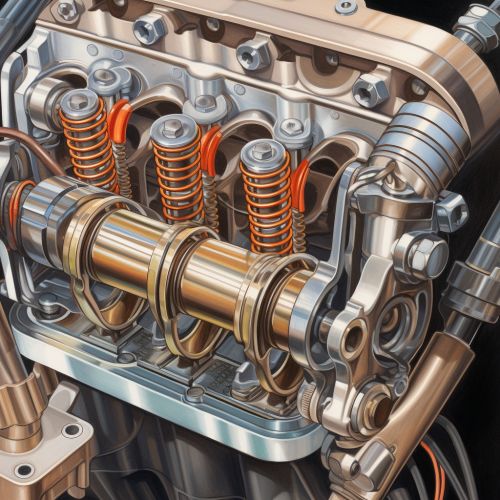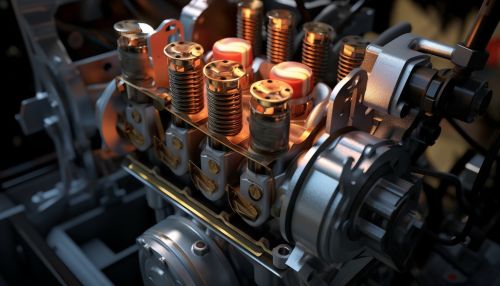Internal Combustion Engine
Introduction
The internal combustion engine (ICE) is a heat engine where the combustion of a fuel occurs with an oxidizer (usually air) in a combustion chamber. In an internal combustion engine, the expansion of the high-temperature and high-pressure gases, which are produced by the combustion, directly applies force to a movable component of the engine, such as the pistons or turbine blades and by moving it over a distance, generate mechanical work.
History
The first commercially successful internal combustion engine was created by Étienne Lenoir around 1859 and the first modern internal combustion engine was created in 1876 by Nikolaus Otto (see Otto engine).


Classification
Internal combustion engines can be classified in several different ways:
1. Number of strokes: An important division is between two-stroke and four-stroke engines. In a two-stroke engine, the four "cycles" of internal combustion engine operation (intake, compression, power, exhaust) occur in only two strokes of the piston rather than four.
2. Type of ignition: Internal combustion engines can be categorized by their ignition type: spark ignition (SI) and compression ignition (CI). In a spark ignition engine, the fuel is mixed with air and then inducted into the cylinder during the intake process. After the piston compresses the fuel-air mixture, the spark ignites it, causing combustion.
3. Number of cylinders: Engines can also be categorized by the number of cylinders (e.g., single cylinder, inline-four, V6, V8).
4. Fuel type: Engines can be classified based on the type of fuel used (e.g., gasoline, diesel, natural gas).
Working Principle
The working principle of an internal combustion engine involves a cycle of four distinct processes: intake, compression, combustion (power), and exhaust. This is known as the Otto cycle, after Nikolaus Otto who invented it in 1876.
Components
The main components of an internal combustion engine include the cylinder, piston, connecting rod, crankshaft, and valve train. The cylinder is the space in which the piston travels, and it is closed at one end by the cylinder head and open at the other end to the crankcase. The piston is a cylindrical part that moves up and down in the cylinder. The connecting rod connects the piston to the crankshaft, converting the linear motion of the piston into rotary motion. The crankshaft is a shaft with one or more cranks, or "throws," to which the connecting rods are attached. The valve train includes the valves, camshaft, and all the mechanisms for opening and closing the valves.
Applications
Internal combustion engines are most commonly used in automobiles, where they are used to power the vehicle. They are also used in many other applications, including motorcycles, powerboats, aircraft, and in a variety of industrial, agricultural and construction equipment.
Environmental Impact
The environmental impact of internal combustion engines is significant. They emit a range of pollutants, including carbon dioxide (a greenhouse gas), particulates, and various other types of air pollution. They also contribute to noise pollution.
Future Trends
The future of internal combustion engines is uncertain, with many experts predicting that they will be replaced by electric motors in the coming decades. However, there is also ongoing research into making internal combustion engines more efficient and less polluting.
